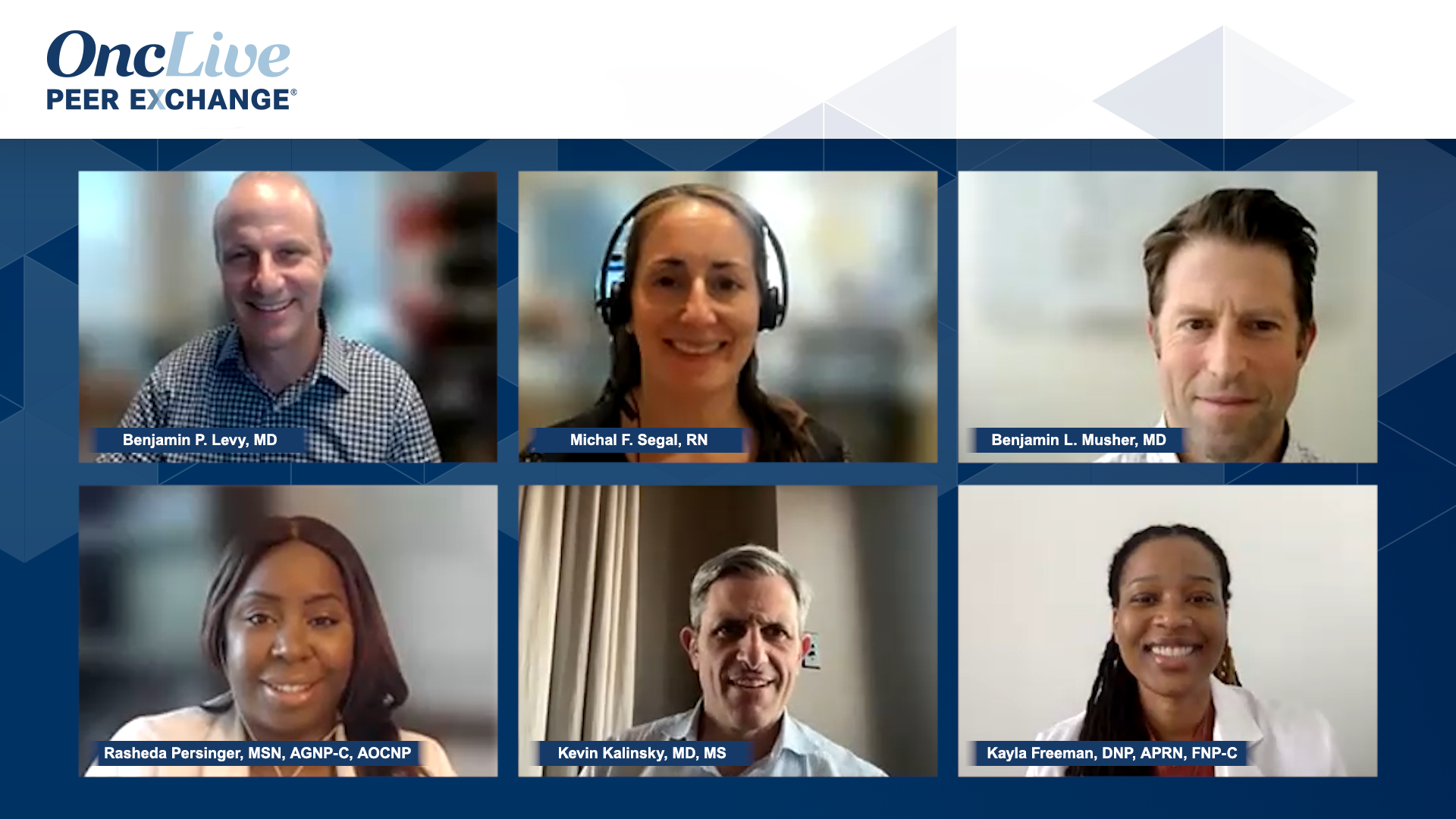- Advertise
- About OncLive
- Editorial Board
- MJH Life Sciences brands
- Contact Us
- Privacy
- Terms & Conditions
- Do Not Sell My Information
2 Clarke Drive
Suite 100
Cranbury, NJ 08512
© 2025 MJH Life Sciences™ and OncLive - Clinical Oncology News, Cancer Expert Insights. All rights reserved.
Molecular Testing Considerations in Cancer Treatment
Medical oncologists review the complexities of molecular testing, including tissue exhaustion, and discuss management approaches.
Sponsored in part by Daiichi Sankyo. Content independently developed by OncLive®.
Transcript:
Benjamin L. Musher, MD: We do liquid [biopsies] also, which I think is great because it will often show stuff quicker. One question I ask is—this is difficult political question, but a lot of the time if you have metastatic disease and get a liver biopsy, a whole litany of often useless immunochemical stains are sent off. All the alphabet soup, which we all know almost never changes our clinical impression. It certainly doesn’t guide therapy. Most of those things don’t guide therapy. What conversations have you all had with your pathologists to diplomatically ask them to save tissues so that you’ll actually have enough for NGS [next-generation sequencing], which will be more important in trying to back off on some of those old-fashioned 19th- or 20th-century stains that are done?
Benjamin P. Levy, MD: I’ll just answer quickly.
Benjamin L. Musher, MD: [It's a] loaded question.
Benjamin P. Levy, MD: I’m pretty direct. I say, “Please stop staining,” because we do get this. We have an email in our inbox; Rasheda and Ido right now with a pathologist who loves to stain. It’s OK. But we just said, “Please stop staining so we can do NGS and PD-L1.” And I agree with you. Tissue exhaustion via staining is a real problem in the context of how precious tissue really is. I don’t know about breast [cancer]. [Dr Kalinsky] and Kayla maybe, it seems like that’s not a big issue in breast [cancer] in terms of tissue [that] seems to be available. It doesn’t seem to be exhausted. You can always go back and do another biopsy. I don’t want to minimize the journey here or the challenges, but I’d love to get your input on that.
Kevin Kalinsky, MD, MS: I can start with that, and Kayla feel free to chime in and add. It’s a little bit different. One, I’ll say, our standard for checking, for instance, ESR1 mutations is with circulating tumor DNA [ctDNA]. Also, because I’m thinking about things that are actionable, for patients who have PIK3CA mutations, we start with ctDNA, and then if it’s not detected we’ll go to tumor tissue. But that’s a mutation that’s identified early in the diagnosis, meaning we may be able to get that from the primary tissue. When we look at PD-L1 status in our study that led to the approval of checkpoint inhibitors in frontline metastatic triple-negative breast cancer, when they looked back and saw the tissue they would be staining for PD-L1 status, it included a good proportion of patients with primary tissue. So sometimes it does come up, especially in the context of de novo disease.
The other thing that I would say, and Kayla, feel free to chime in with additional comments, for us when we often check repeat biopsies, because there could be some patients, for instance, who have ER [estrogen receptor]–positive disease. And we’re like, well, they’re not really responding to any endocrine therapy. This isn’t behaving like an endocrine-sensitive tumor. Sometimes we will repeat a biopsy to see if the immuno phenotype changed. In that context, I always mention to interventional radiology, “Listen, these are the things that I need. I specifically need ER/PR/HER2. I want NGS. Please collect more than 1 core because this is what I’m trying to do,” and that sometimes mitigates the issue.
Benjamin P. Levy, MD: Kayla, I don’t know if you had anything to add to that. I do think communication is key. We have the same issue where we have to reach out to the pulmonologist or the intervention radiologist and tell them this is what we need, and we have to reach out to the pathologists and say, Don’t do anything. We haven’t even talked about clinical trials, by the way, and the tissue that’s needed for that. But there’s a huge issue for communication and multidisciplinary care as we start rounding out the care diagnostically to plan for our therapies.
Transcript is AI-generated and edited for clarity and readability.
Related Content:





